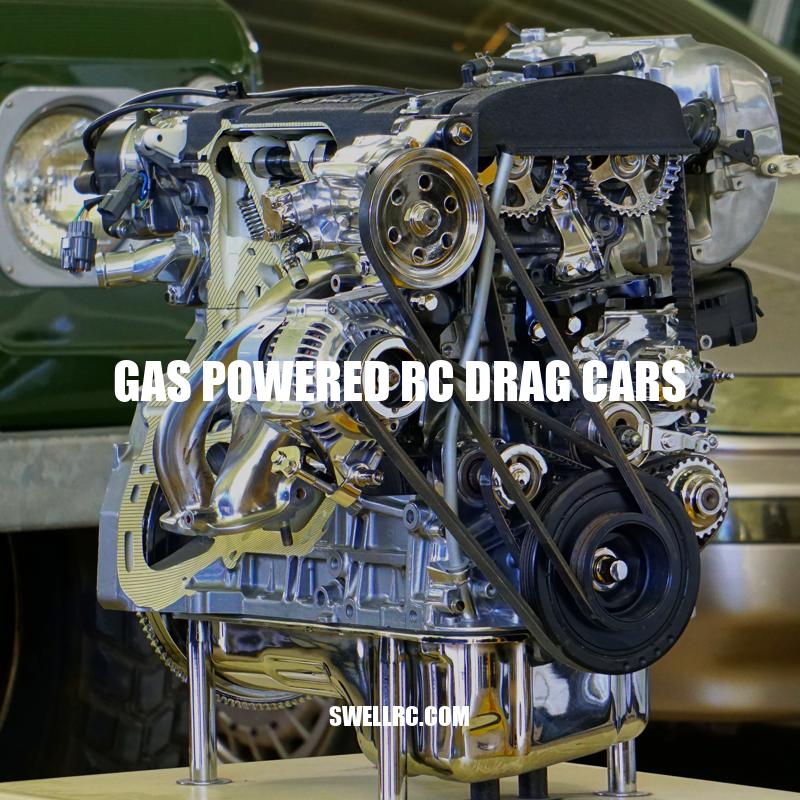Gas-Powered RC Drag Cars: Speed and Thrills on the Track
Gas-powered RC drag cars are high-performance vehicles that are specifically designed for speed. Unlike traditional remote control cars, these models are built with powerful engines and specialized bodies to maximize straight-line performance and reach top speeds quickly. Gas-powered RC drag cars use combustible fuel to power their engines, which provides a longer run time and usually delivers more horsepower than their electric counterparts. Because of their speed and precision, these cars are a popular choice among remote control enthusiasts who enjoy racing and competing with others. Whether you’re a seasoned pro or just getting started in the hobby, gas-powered RC drag cars offer a fast-paced and exciting way to enjoy remote control car racing. However, it’s important to note that these vehicles require regular maintenance and upkeep to perform at their best. By taking the time to care for your gas-powered RC drag car, you can ensure that it delivers top performance every time you take it out for a spin. With a little practice and patience, you can become a skilled remote control racer and enjoy countless hours of fun and excitement with your gas-powered RC drag car.
Engine options for Gas-Powered RC Drag Cars
When it comes to selecting an engine for your gas-powered RC drag car, there are a variety of options available. Some of the most popular engine types include:
- Nitro Engines: Nitro engines are a popular choice among experienced racers for their power and speed. These engines use a nitro methane and oil mixture for fuel, providing exceptional power output and performance. However, nitro engines are typically more expensive and require more maintenance than other engine types.
- Gas Engines: Gas-burning engines are another great option for gas-powered RC drag cars. These engines typically have a similar level of performance to nitro engines, but are more affordable and require less maintenance. Fuel for gas engines is also more readily available than nitro fuel.
- Straight Methanol Engines: Straight methanol engines use methanol as fuel and are a popular choice for drag racing. These engines provide exceptional power output, but also require more maintenance and careful fine-tuning to achieve maximum performance.
- Electric Engines: While not technically a gas-powered option, electric engines are another way to power your RC drag car. These engines are highly efficient and require minimal maintenance, but are typically not as powerful or fast as gas or nitro engines.
When selecting an engine for your gas-powered RC drag car, it’s important to consider your skill level, budget, and performance needs. Websites such as HobbyKing and Horizon Hobby offer a wide selection of engines and other components for gas-powered RC cars, with detailed specifications and reviews to help you make an informed choice.
What engines are used in drag cars?
Drag cars can use different types of engines, depending on the category of the car and the fuel used. In the case of Top Alcohol Dragster, they may use either a supercharged methanol-burning engine or an injected nitromethane combination. Injected nitro cars do not use a transmission, while the supercharged cars have three forward speeds.
Body Design and Weight Distribution
The body design and weight distribution of your gas-powered RC drag car are important factors that can greatly impact its performance and speed. Some key things to consider when designing or modifying your car’s body and weight distribution include:
- Lightweight Materials: To achieve maximum speed, it’s important to use lightweight materials for your car’s body. This can include using polycarbonate or other composite materials for the body, or even removing unnecessary parts that add weight.
- Aerodynamic Modifications: Making modifications to your car’s body, such as adding spoilers or wings, can help to improve its aerodynamics and reduce drag. This can help to achieve faster speeds and better overall performance.
- Proper Weight Distribution: Achieving the proper weight distribution for your car is essential to its performance. Typically, you’ll want to aim for a balance of weight across the front and back wheels to provide better traction and stability during acceleration.
- Suspension Setup: Proper suspension setup can help your car stay on a straight path and maintain speed. This can include modifying the springs, shocks, and other suspension components to achieve the perfect balance between stiffness and flexibility.
In addition to these factors, there are many other techniques and modifications that can be used to further enhance your gas-powered RC drag car’s speed and performance. Websites such as RC-Garage and Tower Hobby offer a wide range of accessories and components that are specifically designed for drag racing, including specialized motors, batteries, and tires.
A table can be helpful to highlight information about modifying the weight distribution. For example:
| Modification | Effect on Weight Distribution |
|---|---|
| Adding weight to the back of the car | Increases weight on rear wheels, which can help with traction and stability |
| Removing weight from the front of the car | Decreases weight on front wheels, which can help with acceleration but may also affect steering |
| Adjusting suspension stiffness | Can help to balance weight distribution across front and back wheels |
Is weight distribution important in a car?
Yes, weight distribution is important in a car. The weight distribution helps anchor the vehicle to the road, making it safer to handle. Ideally, a vehicle should have a 50/50 weight distribution over all four wheels. For more information on car safety and handling, visit websites such as Car and Driver or Consumer Reports.
Care and Maintenance
Proper care and maintenance are essential to ensure that your gas-powered RC drag car continues to run smoothly and reliably. Here are some important tips to keep in mind:
- Regular Oil Changes: Just like with a real car, regular oil changes are important to keep your engine running smoothly. Be sure to use a high-quality oil designed for use in RC cars.
- Clean the Car: Dirt and debris can affect your car’s performance, so be sure to regularly clean the car and remove any buildup or blockages in the engine or exhaust.
- Perform Regular Maintenance: Regular maintenance tasks such as cleaning the air filter, adjusting the carburetor, and checking the spark plugs can help to prevent more serious issues down the road.
- Store the Car Properly: When storing your car for a prolonged period, be sure to drain the fuel and store it in a cool, dry place to prevent damage or degradation of the engine.
In addition to these general maintenance tasks, there are also many products and accessories available that can help you keep your gas-powered RC drag car running smoothly. Websites such as AMain Hobbies and RC Planet offer a wide range of cleaning tools, lubricants, and other maintenance accessories that are specifically designed for use with RC cars.
Overall, by taking good care of your gas-powered RC drag car, you can help ensure that it continues to deliver top performance and an exciting racing experience every time you use it.
How can I make my RC car faster with petrol?
Using petrol instead of electric power can make your RC car faster. You will need to make sure that your car is designed for petrol and purchase a petrol engine and fuel. Additionally, you can make modifications to the car such as upgrading the tires, adding more powerful batteries for the electric components, and adjusting the suspension. It is important to keep safety in mind when working with petrol engines. You can find more information on websites such as RC Driver and Nitro RCX. Certain products that can help with speed include the Traxxas Nitro Rustler and the HPI Racing RS4 Nitro.
Getting Started with Gas-Powered RC Drag Cars
If you’re thinking about getting into the exciting world of gas-powered RC drag racing, there are a few things to keep in mind.
Firstly, it’s important to invest in quality equipment that will provide a solid foundation for your racing skills and last for years to come. Look for models that are specifically designed for drag racing, with lightweight bodies and powerful engines that can deliver the high speeds and straight-line racing you’re looking for.
Once you have your equipment, it’s time to start practicing! Find local RC car clubs or racing events in your area to connect with other enthusiasts and work on your skills. And don’t forget to take good care of your car with regular maintenance and cleaning, so that it can deliver top performance when it’s time to hit the track.
Overall, gas-powered RC drag cars offer a thrilling and engaging hobby for anyone who enjoys speed, competition, and the satisfaction of building and maintaining their own vehicles. With the right equipment, care, and practice, you’ll be well on your way to becoming a skilled drag racer in no time. So what are you waiting for? Start exploring the world of gas-powered RC drag cars today!



